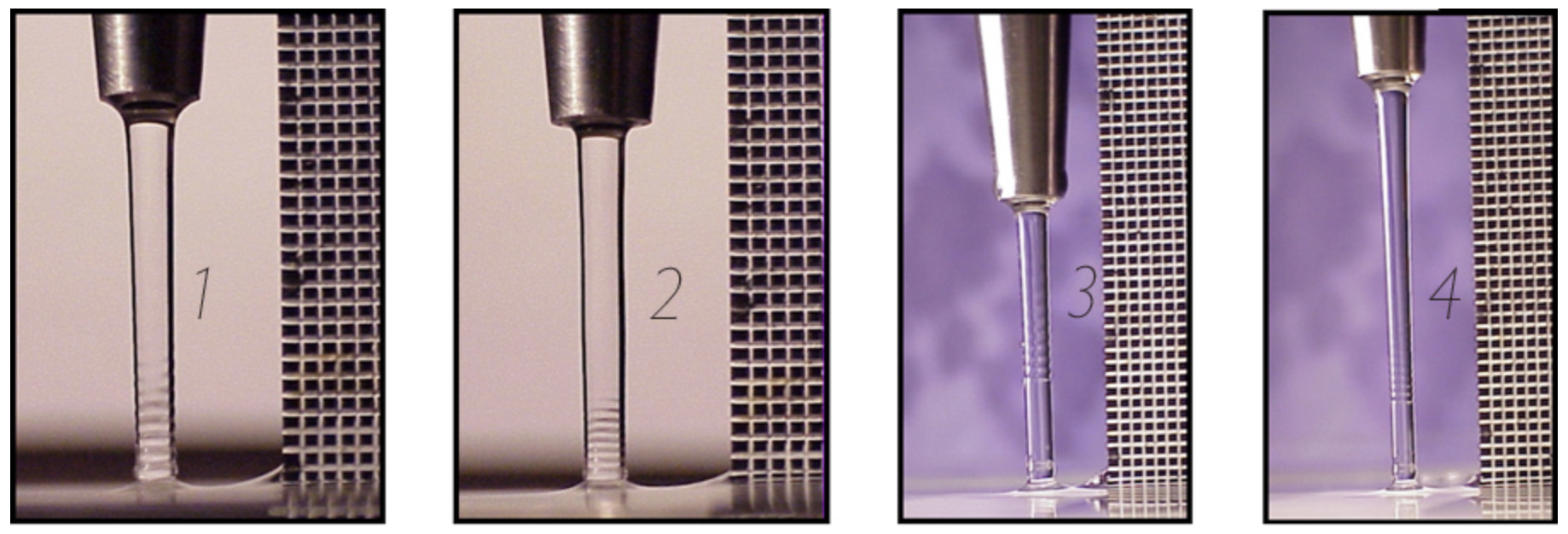
When a pure water jet impinges on a reservoir, capillary waves are excited and propagate up the jet at the same speed that the jet falls, thus giving rise to the standing field of capillary waves evident in Figures 1 and 2. When the reservoir is contaminated by the presence of surfactant, a surface tension gradient between the reservoir and jet arises, and draws surfactant onto the base of the jet. The surfactant serves to impart to the jet surface an effective elasticity, thus suppressing both the capillary wave field and the extensional surface motions expected on the falling jet. The surface tension gradient balances viscous stresses at the jet surface, so that the surface at the base of the jet is entirely quiescent. The jet enters the contaminated reservoir as if through a rigid pipe (Figures 3 and 4).
The results of our combined experimental and theoretical investigation of the fluid pipe phenomenon is presented Hancock & Bush, JFM (2002).
